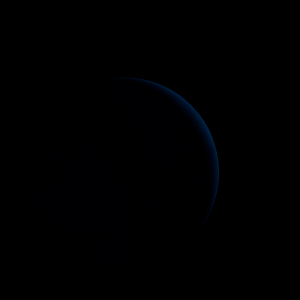|
|
Space Astro
|
Info for exoplanet "Bipa"
| Scientific (actual) data |
|---|
| Name | GJ 9404 b |
| Planet status | Confirmed |
| Mass sini | 0.0374 |
| Orbital period | 13.4586 |
| Semi major axis | 0.0943 |
| Orbit eccentricity | 0.49 |
| Discovered | 2022 |
| Updated | 2024-09-29 |
| Omega | 108 |
| Tperi | 2457100 |
| K | 5.13 |
| Publication | Published in a refereed paper |
| Detection type | Radial Velocity |
| Mass measurement type | Radial Velocity |
| Alternate names | HIP 60093 b |
| Star name | GJ 9404 |
| Right ascension | 184.85° |
| Declination | 28.38° |
| Mag v | 10.62 |
| Star distance | 23.884 |
| Star metallicity | -0.13 |
| Star mass | 0.609 |
| Star radius | 0.626 |
| Star sp type | M0.5V |
| Star temperature | 3861 |
| Star alternate names | BD+29 2279, HIP 60093 |
| Wikipedia article | GJ 9404 b |
Back
| |
| Fictional info (?) |
|---|
| Suggested name | Bipa |
| Planet type | Terrestrial |
|
Surface often populated by harmless ultra advanced herbivores known as "Rune". They survive by eating the Jinuiyu Komya plant during the day. They are closely related to the Dozoki Chare but with scales and vary in size from 1 to 2 mm. The Rune are known to thrive at temperatures from -70 to -50°C and very low gravity which is common on this planet. |
| Estimated population | 220000000 |
| Atmosphere | Oxygen | 52% |
| Carbon dioxide | 47% |
| Methane | 0.16% |
| Water | 0.038% |
| Atmospheric pressure | 3 bar |
 |
| Moon | Teryamyu'mohya | Medium-sized potato shaped rocky asteroid |
| Birehya'myubuhe | Medium-sized round gaseous comet |
| Nyumya'ba | Medium-sized round rocky moon |
| Kakese'basuya | Very small irregular gaseous asteroid |
| Mutari | Medium-sized irregular ice comet |
| Gege | Very small potato shaped oceanic asteroid |
| Maze-gacha | Medium-sized potato shaped crater-filled moon |
| Yomo | Huge round rocky asteroid |
| Pyukyo Nyoeshi | Huge round rocky moon |
| Sukin | Very small round gaseous planetoid |
| Ehomyo-roryu | Huge potato shaped oceanic moon |
| Google search for Bipa |
|
Website by Joachim Michaelis
|
|
|
|